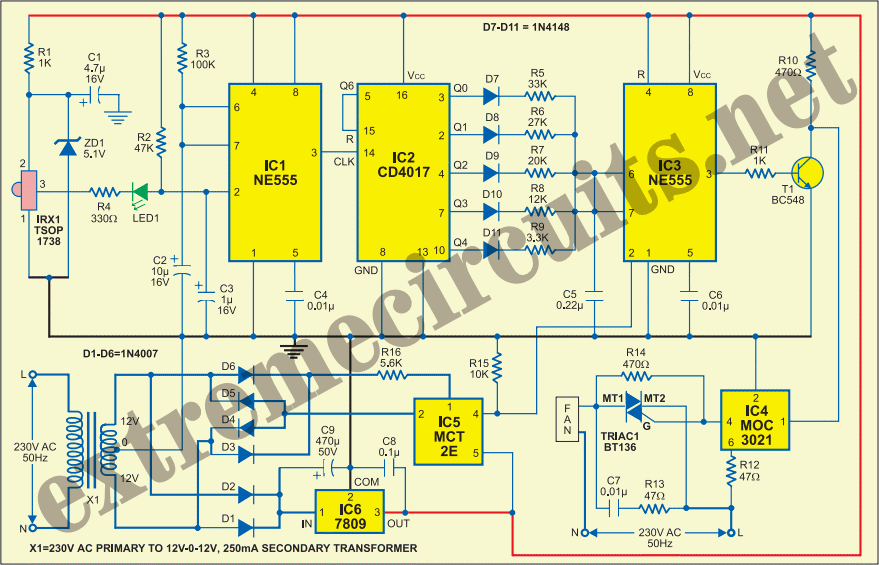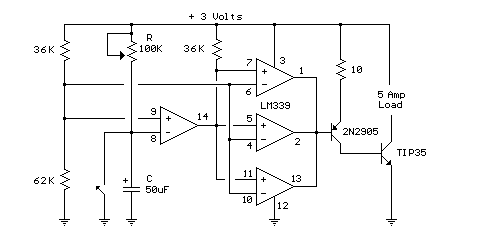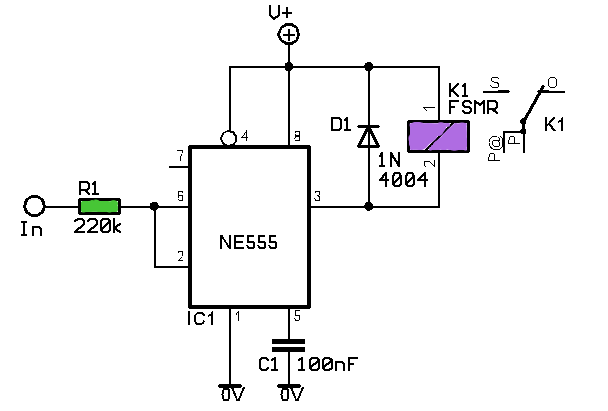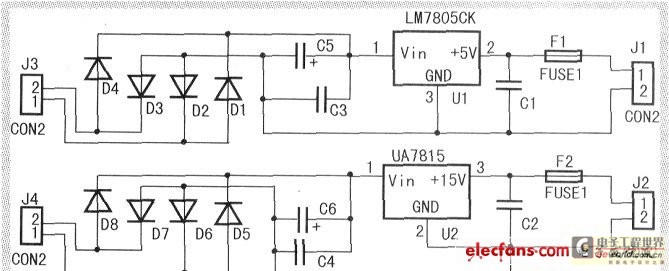
8A positive fixed voltage regulator
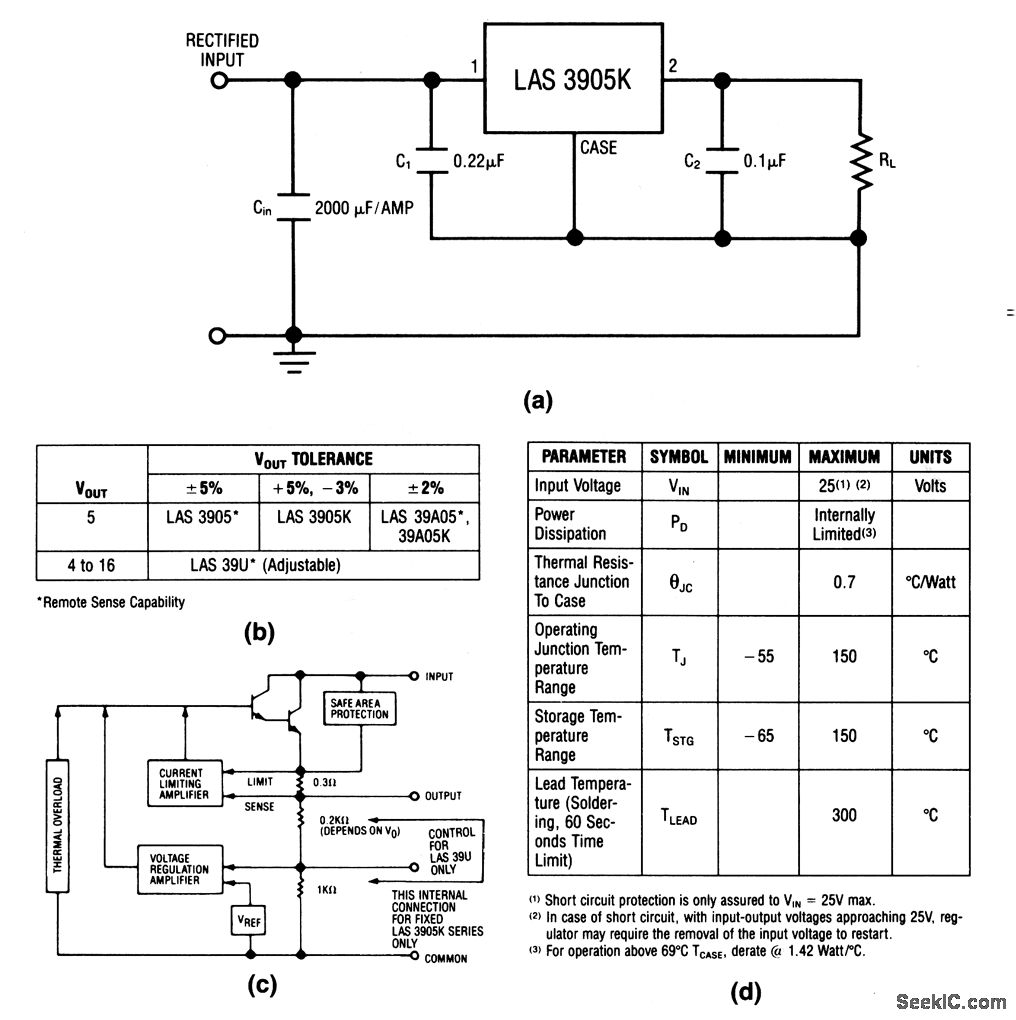
The LAS3905 series voltage regulators are integrated circuits (ICs) that incorporate all components required for linear voltage regulation, including safe-area protection, thermal overload protection, and current limiting. The output voltage and tolerance for the various LAS3905 part numbers are illustrated in Figure 7-50B, while Figure 7-50D presents the absolute maximum ratings.
The LAS3905 series voltage regulators are designed to provide stable output voltages with high precision and reliability. These ICs are particularly suitable for applications that require a regulated voltage supply, such as power management in consumer electronics, automotive systems, and industrial equipment. The internal architecture of the LAS3905 includes features that ensure safe operation under varying load conditions and ambient temperatures.
Safe-area protection is a critical feature that prevents the regulator from entering unsafe operational regions. This is achieved through feedback mechanisms that monitor the output and adjust the control elements accordingly. Thermal overload protection safeguards the device from damage due to excessive heat, which can occur under high load conditions or inadequate heat dissipation. The current limiting function protects both the regulator and the load from excessive current that could lead to component failure.
The output voltage and tolerance specifications for the LAS3905 series are provided in the accompanying figures, allowing designers to select the appropriate part number based on their voltage requirements. The absolute maximum ratings specified in the datasheet are essential for ensuring that the device operates within safe limits, preventing damage from overvoltage, excessive current, or thermal stress.
When designing circuits that incorporate the LAS3905 voltage regulators, it is crucial to consider the layout and thermal management strategies to optimize performance and reliability. Proper decoupling capacitors should be placed close to the input and output pins to minimize voltage spikes and ensure stable operation. Additionally, heat sinks or thermal pads may be required to dissipate heat effectively, especially in high-power applications.
Overall, the LAS3905 series voltage regulators offer a robust solution for linear voltage regulation, combining essential protection features with precise output characteristics, making them a valuable choice for a wide range of electronic applications.The LAS3905 series voltage regulators are ICs that contain all elements necessary for linear regulation (safe-area protection, thermal overload, and current limiting, as shown in Fig. 7-50C). Figure 7-50B shows the output voltage and tolerance for the various LAS3905 part numbers. Figure 7-50D shows the absolute maximum ratings. 🔗 External reference
The LAS3905 series voltage regulators are designed to provide stable output voltages with high precision and reliability. These ICs are particularly suitable for applications that require a regulated voltage supply, such as power management in consumer electronics, automotive systems, and industrial equipment. The internal architecture of the LAS3905 includes features that ensure safe operation under varying load conditions and ambient temperatures.
Safe-area protection is a critical feature that prevents the regulator from entering unsafe operational regions. This is achieved through feedback mechanisms that monitor the output and adjust the control elements accordingly. Thermal overload protection safeguards the device from damage due to excessive heat, which can occur under high load conditions or inadequate heat dissipation. The current limiting function protects both the regulator and the load from excessive current that could lead to component failure.
The output voltage and tolerance specifications for the LAS3905 series are provided in the accompanying figures, allowing designers to select the appropriate part number based on their voltage requirements. The absolute maximum ratings specified in the datasheet are essential for ensuring that the device operates within safe limits, preventing damage from overvoltage, excessive current, or thermal stress.
When designing circuits that incorporate the LAS3905 voltage regulators, it is crucial to consider the layout and thermal management strategies to optimize performance and reliability. Proper decoupling capacitors should be placed close to the input and output pins to minimize voltage spikes and ensure stable operation. Additionally, heat sinks or thermal pads may be required to dissipate heat effectively, especially in high-power applications.
Overall, the LAS3905 series voltage regulators offer a robust solution for linear voltage regulation, combining essential protection features with precise output characteristics, making them a valuable choice for a wide range of electronic applications.The LAS3905 series voltage regulators are ICs that contain all elements necessary for linear regulation (safe-area protection, thermal overload, and current limiting, as shown in Fig. 7-50C). Figure 7-50B shows the output voltage and tolerance for the various LAS3905 part numbers. Figure 7-50D shows the absolute maximum ratings. 🔗 External reference
